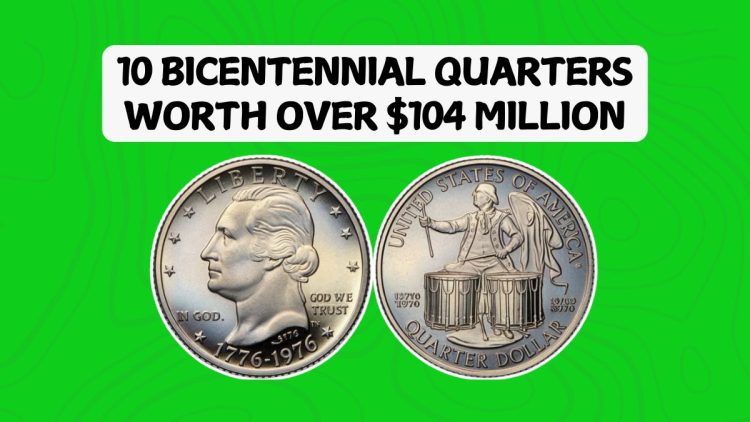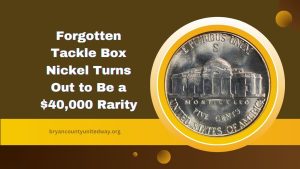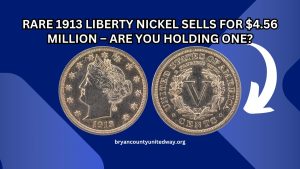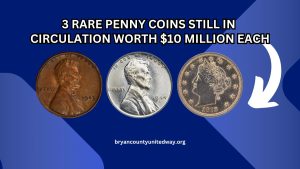The 1976 Bicentennial Quarter holds a special place in American numismatics, minted to commemorate the 200th anniversary of the United States.
While most of these coins are common, certain rare versions have fetched astonishing prices at auctions.
Mint Errors That Skyrocket Value
Mistakes during the minting process can result in coins that are highly sought after by collectors. Some known errors in Bicentennial Quarters include:
- Double Die Obverse: This error features doubled inscriptions or images on the coin’s front side, significantly increasing its value.
- Off-Center Strikes: Coins where the design is misaligned, leaving a blank area, are considered rare and valuable.
- Missing Clad Layer: Some quarters were minted without their top nickel layer, exposing the copper core, making them unique collectibles.
- Wrong Planchet Errors: A few Bicentennial Quarters were mistakenly struck on 40% silver planchets instead of the standard copper-nickel, enhancing their worth.
- Strike Through Errors: Foreign objects interfering during minting can leave unusual imprints, creating distinctive coins prized by collectors.
Silver Composition: The 40% Silver Quarters
While most Bicentennial Quarters are composed of copper-nickel, some collector’s editions contain 40% silver. These silver quarters were exclusively minted in San Francisco and sold in special proof and uncirculated sets.
Depending on their condition, these coins can be worth significantly more than their face value.
High-Grade Coins (MS67+ and Proof-70)
The condition of a coin greatly influences its value. Coins are graded on a scale from 1 to 70, with higher numbers indicating better preservation.
Bicentennial Quarters graded MS67 or higher have fetched over $10,000 at auctions. Even uncirculated coins graded MS65 can command premium prices.
How to Identify a Valuable Bicentennial Quarter
- Check the Mint Mark: Located on the coin’s obverse side, mint marks indicate where the coin was produced.
- No Mint Mark (Philadelphia): Common, but high-grade versions can be valuable.
- D (Denver Mint): Also common; however, error coins or those in exceptional condition are sought after.
- S (San Francisco Mint): Typically silver or proof coins, which are more valuable.
- Inspect for Errors: Use a magnifying tool to detect anomalies like doubling, missing details, or off-center strikes.
- Weigh Your Coin: Regular quarters weigh 5.67 grams, while silver variants weigh 5.75 grams. A heavier coin might indicate a rare silver composition.
- Check the Rim Color: Copper-nickel quarters display a red-copper edge, whereas silver quarters have a solid silver-colored rim.
- Grade Your Coin: If your quarter appears flawless, consider professional grading services like PCGS or NGC to determine its exact grade and value.
| Feature | Details |
|---|---|
| Coin Name | 1976 Bicentennial Quarter |
| Mintage Years | 1975-1976 |
| Mint Locations | Philadelphia (P), Denver (D), San Francisco (S) |
| Notable Features | Dual-date (1776-1976), special Drummer Boy reverse |
| Material Variations | Copper-nickel clad, 40% silver (proof and special mint sets) |
The 1976 Bicentennial Quarter is a cherished piece of American history, but some rare versions are worth millions. If you have one, carefully check its mint mark, weight, and condition to determine its value.
Whether you’re a casual collector or an expert numismatist, knowing what to look for can turn an everyday coin into a small fortune.
FAQs
How do I know if my Bicentennial Quarter is silver?
Look for an “S” mint mark and weigh the coin. If it weighs approximately 5.75 grams, it’s likely a 40% silver variant.
What’s the rarest Bicentennial Quarter?
The highest-graded, perfectly struck MS70 silver Bicentennial Quarter is among the rarest and most valuable.
Can I find a rare Bicentennial Quarter in circulation today?
While it’s possible, it’s highly unlikely. Most valuable versions are in collectors’ hands or uncirculated sets.
How much is a common Bicentennial Quarter worth?
A circulated Bicentennial Quarter typically holds its face value of 25 cents. However, uncirculated or error coins can be worth significantly more.




